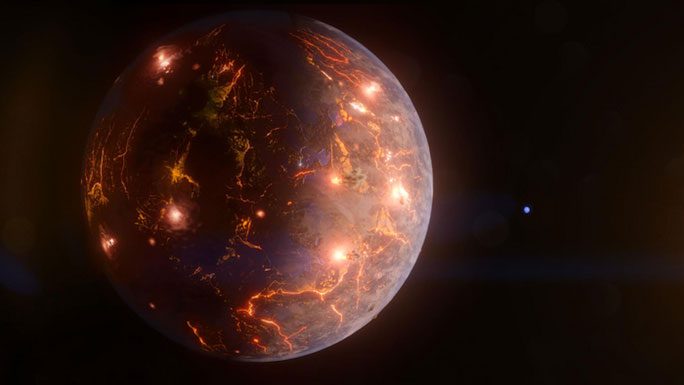LP 791-18 has Earth-like dimensions and possesses a “treasure” identical to Earth – though deadly, it is essential for life.
According to Space, that special feature is a volcano. On Earth, volcanoes – a part of geological activity – and everything referred to as geological activity are crucial for the planet to maintain a stable atmosphere.
Similarly, on LP 791-18, there is an extreme tidally locked planet with its parent star. However, with unique signs indicating the presence of volcanoes, miraculous possibilities may arise.

Mysterious exoplanet LP 791-18 – (Photo: NASA).
The aforementioned planet orbits a red dwarf star approximately 90 light-years away from Earth, located in the southern constellation of Grus.
Tidally locked means it always faces its parent star with one side only, similar to how the Moon is tidally locked with Earth. Thus, it has two sides: one side experiences day, and the other side experiences night. Both sides are covered by countless volcanoes.
The research team, led by astronomy professor Bjorn Benneke from the Exoplanet Research Institute in Montreal, Canada, and Dr. Jessie Christiansen from NASA’s Exoplanet Science Institute, who discovered volcanoes on LP 791-18, is optimistic about the night side.
“The day side may be too hot for liquid water to exist on the surface. But with the amount of volcanic activity we believe exists across the planet, it could allow water to condense on the night side as well as maintain an atmosphere,” Dr. Benneke stated.
LP 791-18 is the third planet identified in this unique star system. The other two planets are approximately 20% and 2.5 times larger than Earth, respectively. All three were discovered by NASA’s “exoplanet hunter” TESS.
It is certain to be studied further, as the correlation between volcanoes and life remains a significant and fascinating question in astrobiology.
“In addition to potentially providing an atmosphere, these processes could stir up materials that would otherwise sink and become trapped in the crust, including those we consider essential for life, such as carbon,” Dr. Christiansen noted.
The research was recently published in the scientific journal Nature.


















































